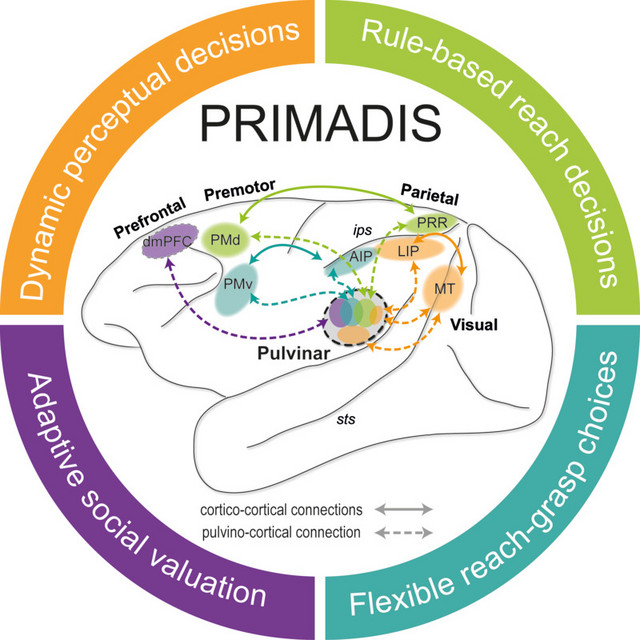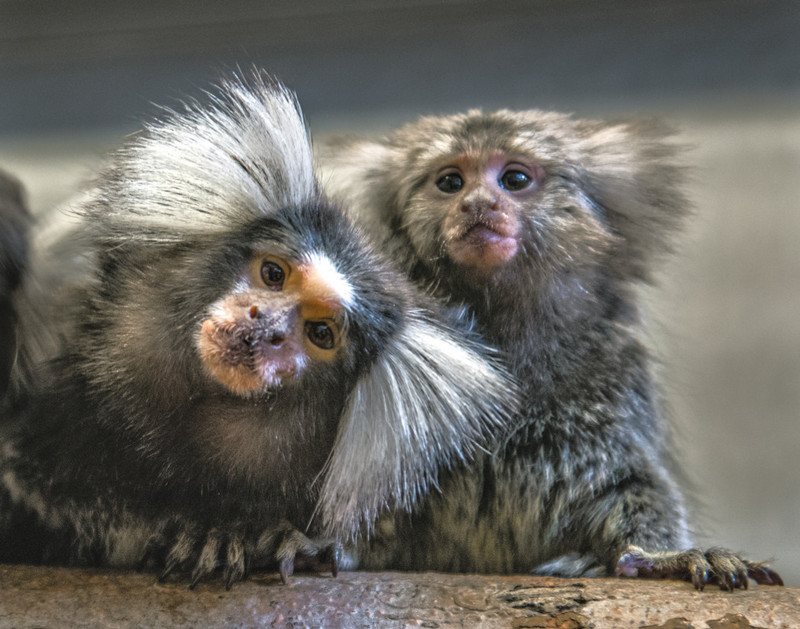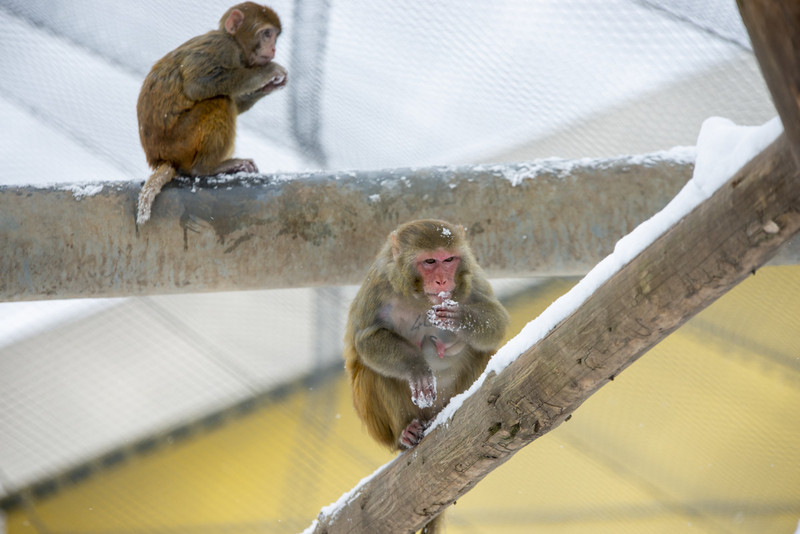A gene-powered journey into the primate brain
The PRIMADIS project embarks on a pioneering journey into the depths of the primate brain, thanks to a funding by the Leibniz Collaborative Excellence Program of one million Euro for a period of three years. The initiative is led by a consortium of scientists from the German Primate Center – Leibniz Institute for Primate Research (DPZ) and the Leibniz Institute for Neurobiology (LIN) in Magdeburg. The researchers aim to unravel the complex neural networks involved in adaptive cognition. At the heart of this endeavor is the thalamic pulvinar, a key brain region with extensive connectivity in cortical areas. By employing innovative chemogenetic techniques, PRIMADIS seeks to selectively silence specific pulvinar-cortical projections, shedding light on their roles in perception, decision-making, and action planning.
Focus on the pulvinar
Central to this research is the role of the thalamic pulvinar, a key brain subcortical nucleus with extensive connections to the frontoparietal and visual cortex. The project, whose full title is "Chemogenetic dissection of primate brain circuits underlying adaptive cognition", will investigate how silencing specific pulvinar-cortical projections impacts behavior and neural processing in dynamic environments. The working hypothesis of the consortium posits that the pulvinar shapes adaptive computations within cortex, enabling primates to flexibly evaluate, learn and deploy appropriate behaviors in dynamically changing environments. “We expect this common principle to emerge across different contexts during perceptual, sensorimotor, and social decisions, revealing a recurring functional “motif” despite the complexity of pulvinar organization and connectivity”, says Igor Kagan, a member of the consortium.
A uniquely equipped consortium
The PRIMADIS consortium combines the expertise of multiple research groups across the two participating Leibniz institutes, and external associated members. This collaboration leverages extensive and complementary knowledge in multi-areal neurophysiology, imaging, viral transfection, and molecular techniques, allowing to pursue this ambitious project and to link specific neural pathways to cognitive functions in rhesus macaques and marmoset monkeys. Four closely linked subprojects supported by a chemogenetic development platform and imaging facilities at DPZ and LIN will investigate perceptual, reach, grasp, and social decisions.
DPZ members: Raymundo Báez-Mendoza, Susann Boretius, Alexander Gail, Igor Kagan, Michael Ortiz-Rios, Hansjörg Scherberger, Caspar M. Schwiedrzik (also at University Medical Center Göttingen), Stefan Treue, Melanie Wilke (also at University Medical Center Göttingen).
LIN members: Kristine Krug, Matthias Prigge, Stefan Remi
Effective therapies for neurological disorders
This project seeks to position Germany as a major player in the emerging field of primate chemogenetics. Since chemogenetics has a tremendous human translational potential, promising effective targeted therapies for neurological disorders, the focus on primates will serve as an essential milestone not only for the basic science but also for clinical applications. “Our research will not only push the boundaries of primate neuroscience but also foster a stronger partnership between the two Leibniz institutes, DPZ and LIN, enhancing our collective research capabilities towards this ambitious goal”, said Stefan Treue, the director of the German Primate Center and a consortium member.




